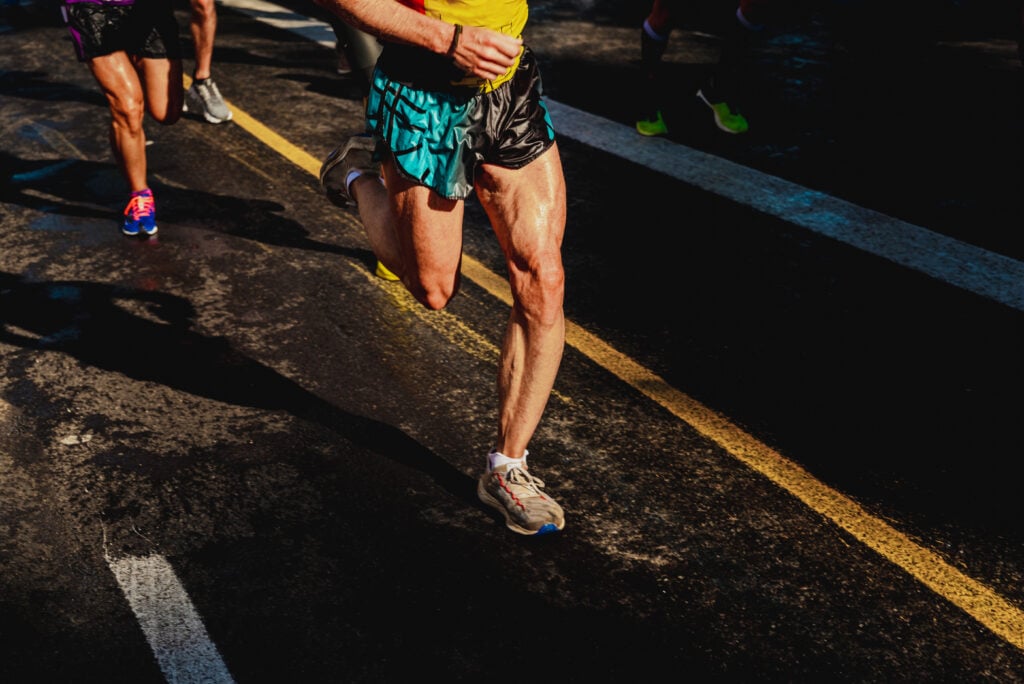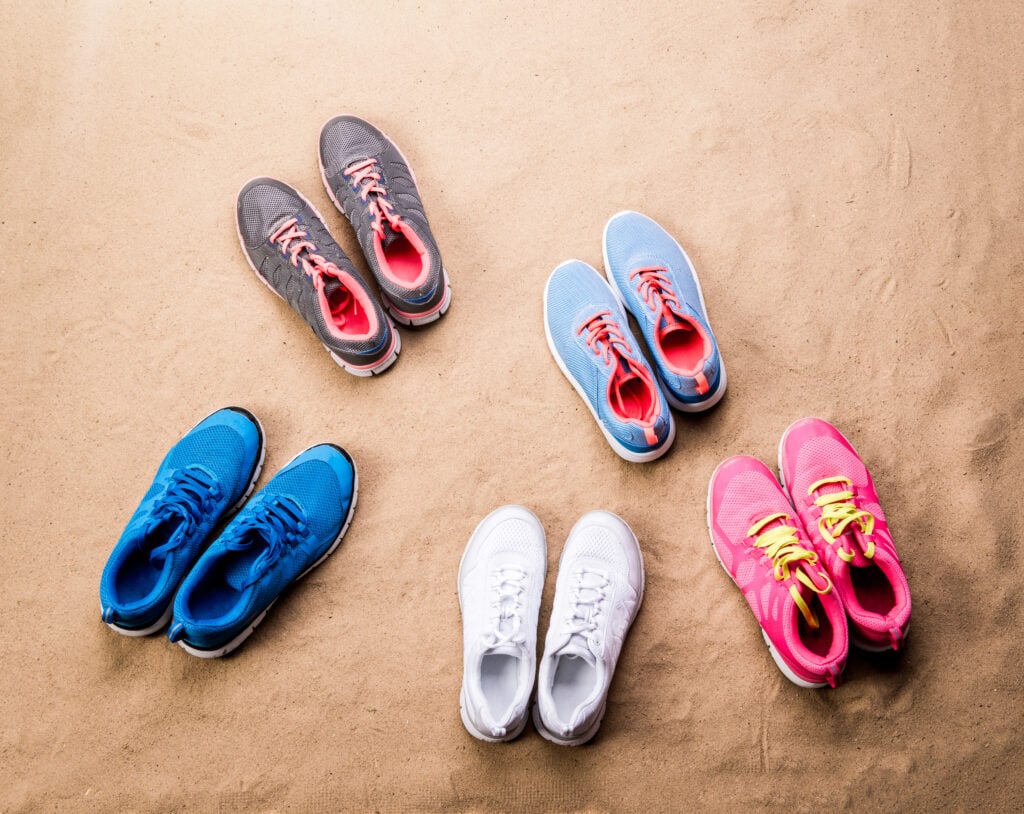So you’ve decided to try keto?
Good call.
I’m a running coach, and I’ve gone all-in on the keto lifestyle myself. It changed the game for my body, my energy, and even how I coach.
But I won’t lie—it’s not always easy, especially at first.
This guide will walk you through a real-world clean keto food list to help you stay fired up and consistent.
Because here’s the deal: if your meals get boring or feel like punishment, you’ll quit. I’ve seen it happen. Heck, I almost did it myself.
Let me back up.
I’m David Dack, and like many runners, I packed on some weight one off-season a few years ago. Decided to give keto a go, and within a few weeks, I dropped the extra pounds and felt sharper than I had in years.
Living in Bali, where rice and tropical fruit are everywhere, I had to get creative with local ingredients.
Think coconuts, avocados, grilled fish.
It worked.
But figuring out what to eat day in and day out? That was the tough part.
When I first started, meal boredom hit fast. The cravings, the same-old-same-old, the temptation to bail… I know the struggle.
Research even shows that 15% of people ditch diets because the food gets boring.
I get it. I’ve been there. And I’ve helped clients push through it too.
Let’s get to it.
Keto Diet 101: What It Is and Why I Stick With Clean Keto
The ketogenic diet is simple in theory: low carb, high fat.
That combo shifts your metabolism into ketosis, where your body uses fat for energy instead of sugar.
The result?
You burn fat more efficiently, feel fewer energy crashes, and (for many of us) even think clearer.
To stay in ketosis, you usually need to keep carbs under 20–30 grams a day.
That’s tight.
One apple can blow your whole day. When I started tracking carbs, I realized even “healthy” foods like bananas or too many almonds were pushing me over.
Everyone’s carb limit is a little different.
Some people can stay in ketosis at 30–40 grams, but I have to stay under 20 grams or I’m out.
But hitting ketosis isn’t just about macros.
The quality of your food matters. That’s where clean keto comes in.
- Clean keto means eating whole foods: real meat, fresh veggies, good fats. Think grass-fed beef, wild fish, eggs, olive oil, and greens.
- Dirty keto? That’s low-carb junk. Bacon and cheese all day, with zero fiber and a mountain of sodium. Sure, you’ll hit ketosis—but long-term, that stuff messes with your energy, digestion, and overall health.
Research backs this up. A clean keto diet gives you more vitamins and minerals and supports better fat loss and wellness outcomes than a junk-heavy version.
I’ve lived it.
The more I cut processed “keto snacks,” the better I felt.
Cravings dropped.
My runs got stronger.
And my mid-afternoon slumps? Gone.
Others have seen this too. A fiend of mine ditched dirty keto bars for real food and not only lost more weight but also felt better, had fewer stomach issues, and even said his seasonal allergies eased up. That lines up with what I’ve seen coaching runners and testing it out myself.
Don’t get me wrong—dirty keto might get you into ketosis.
But if you want to feel good, train hard, and stay in this for the long haul, clean keto is the better play.
And no, clean keto doesn’t mean bland food. We’re not talking boiled chicken and lettuce. You can read about dirty keto vs clean keto here.
Think: bunless burgers with avocado and sugar-free ketchup, rich casseroles made with coconut cream, and spicy keto egg dishes.
Here’s how to keep it simple:
Quick & Dirty Clean Keto Rules (The Way I Coach It):
- Keep carbs super low (~20g net carbs/day). Load up on leafy greens and go easy on berries.
- Fat is your fuel (around 70% of your calories). Go big on olive oil, coconut oil, grass-fed butter, ghee, avocado, nuts.
- Protein is moderate (~20%). Get it from clean meats, fish, eggs, cheese.
- Whole foods only. If it has a barcode and 12 ingredients, skip it.
- Stay hydrated. Keto flushes out water and minerals. Drink lots, and get your sodium, potassium, and magnesium in. (Broth or electrolyte tablets are gold. I swear by them, especially in Bali heat.)
- Spice it up. Use herbs, garlic, chili, turmeric, rosemary—whatever it takes to keep things tasty. There’s no excuse for bland food.
Clean Keto Macros Made Simple (And What They Look Like on Your Plate)
Let’s break down the math without turning this into a nutrition lecture.
Keto is all about macros—your macronutrient ratios.
But here’s the truth: obsessing over every gram is a fast track to burnout.
You don’t need a spreadsheet. You just need to know your ballpark.
Here’s the typical clean keto ratio:
- Fat: ~70% of your daily calories
- Protein: ~20–25%
- Carbs: ~5–10% (usually <20–30g net per day)
Think of it like this:
What 2,000 Calories Looks Like on Clean Keto:
- Fat: ~155g
- Protein: ~100g
- Carbs: ~25g net
If you’re active, a runner, or just hate being hungry, you’ll probably want to lean toward the higher end of protein.
But still, fat is your fuel. That’s the biggest shift.
When I first started, I made the rookie mistake of under-eating fat. I was eating clean, tracking carbs… but I felt sluggish.
Why?
Because I wasn’t giving my body the fuel it needed to run on fat. Once I started adding more oil to my veggies, tossing avocado into everything, and not fearing the yolks—I finally felt that steady energy people rave about.
And no, this doesn’t mean you need to track every bite.
But for the first few weeks, I recommend using an app like Cronometer or Carb Manager just to get a feel for your real intake.
Most beginners overdo protein and sneak in too many hidden carbs. The app helps you spot where you’re off.
Clean Keto Food List for Beginners
Let’s get one thing straight—clean keto isn’t about fancy supplements or overpriced shakes.
It’s about eating real food.
Simple, whole, satisfying meals that help you cut carbs, torch fat, and actually feel good doing it.
When possible, go for the high-quality stuff—organic, grass-fed, wild-caught—but don’t let that become an excuse. If all you can afford is basic eggs and butter from the corner shop, that still works.
Clean keto is about better choices, not perfect ones.
First: What to Avoid on Keto (So You Don’t Sabotage Yourself)
Before we dive into what to pile on your plate, let’s tackle the traps that’ll knock you out of ketosis or just make you feel like crap. These are the foods I warn every beginner about—and yep, I’ve made some of these mistakes too.
High-Carb, High-Junk Offenders:
- Sugar bombs: Candy, cookies, soda, ice cream, you name it. These are carb grenades. Even “natural” sweeteners like honey or agave? Still sugar. Still a problem. Your body doesn’t care if it came from bees or a corn syrup factory—it all spikes insulin.
- Grains & starches: Bread, pasta, rice, cereal, oatmeal… gone. Even so-called “healthy” grains like quinoa and oats are too high-carb for keto. Same for starchy veggies—potatoes, corn, peas, sweet potatoes. Hate to break it to you, but peanuts too (they’re actually legumes).
- Sugary fruit: Bananas, mangos, pineapple, apples—these are sugar bombs in disguise. Stick to small portions of berries if you want fruit. Juice and dried fruit? Basically candy.
- Packaged junk: Crackers, chips, “low-carb” protein bars… Even if it says “keto” on the label, that doesn’t mean it’s clean. I’ve seen keto snacks stall progress because they sneak in hidden carbs or nasty additives. One guy on Reddit called out how some brands “fudge the fiber” to trick the net carb math. Don’t fall for it.
- Crap fats: Margarine, shortening, and junky vegetable oils like soybean or canola? These are inflammatory and wreck your gut. Avoid them. And those greasy bacon-wrapped sausages filled with fillers and nitrates? Save ‘em for a cheat meal—don’t build your diet around them.
- Booze bombs: Most beer, sweet cocktails, and sugary mixers are off the list. A glass of dry red wine or a shot of vodka with soda water is okay now and then—but alcohol can slow fat burning and destroy your willpower. If you’re serious about results, skip the drinks—especially in the first few weeks.
Okay, Now The Good Stuff – What You Can Eat
Here’s the heart of clean keto: fat is fuel. But not just any fat. We’re not guzzling mystery oil from deep fryers. We’re going for real, satisfying, body-loving fats. These are the ones I keep stocked at home—and recommend to every runner trying keto.
Healthy Fats and Oils (Your Main Fuel Source)
Fat isn’t the enemy. It’s your teammate—if you choose the right ones.
- Extra Virgin Olive Oil: This one’s non-negotiable. Great for salads, low-heat cooking, and even drizzling over eggs or grilled meat. I use it every day, no exaggeration.
- Avocado Oil: Clean taste, high smoke point—awesome for cooking. I also mix it into marinades and homemade mayo.
- Coconut Oil: This is a keto staple. Packed with MCTs that your body quickly turns into ketones. I toss a spoonful in my coffee some mornings—turns it into a frothy, energizing fat-bomb latte that holds me over till lunch.
- MCT Oil: Basically a concentrated shot of the good stuff from coconut. It gives quick energy and supports ketosis. But a word of advice—start small. Go overboard and you’ll regret it. Trust me.
- Grass-fed Butter & Ghee: Butter is back, baby. Especially when it comes from grass-fed cows—it’s richer in omega-3s and vitamin K2. Ghee is butter’s cooler cousin—more stable for cooking, with a nutty flavor. I use it for eggs almost every morning.
- Cocoa Butter: Yep, the same fat used in making chocolate. It’s got almost no carbs and smells like dessert. I melt it into keto coffee sometimes—tastes like a mocha dream.
- Animal Fats (Lard, Tallow, Duck Fat): These get a bad rap, but they’re legit—if they come from clean sources. I was weirded out by lard at first, but roasting veggies in pastured pork fat? Total game changer.
- Palm Oils (Sustainably Sourced): Red palm oil has a unique flavor and is rich in vitamins. Use it here and there, but it’s not a go-to for me.
- Nut & Seed Oils (for Flavor, Not Frying): Sesame oil, macadamia, walnut oil—these are great for cold dishes. I splash toasted sesame oil into keto fried rice made with cauliflower, and it makes it taste like takeout.
But Why These Fats?
They’re mostly full of saturated and monounsaturated fats—clean-burning, steady-energy fats. None of that rancid, industrial junk.
For example:
- A study in the Journal of Nutritional Biochemistry showed that extra virgin olive oil can help lower blood pressure and support weight loss.
- MCTs from coconut oil have been linked to better metabolism and brain support.
But honestly? You don’t need a lab coat to know that real fat makes food taste better and keeps you satisfied longer.
Just remember—fat’s still dense in calories.
You don’t need to chug it. Eat till you’re full, not stuffed.
Clean Keto Proteins (Not Just a Carnivore Buffet)
Protein on keto is like your foundation.
You need enough to repair muscle, stay full, and fuel workouts—but too much and your body can convert some of it into glucose, which can kick you out of ketosis. It’s a balancing act.
Here’s what I go for and recommend to clients:
Best Clean Keto Protein Sources:
- Eggs (pasture-raised if possible): Nature’s multivitamin. I eat 2–4 most mornings.
- Grass-Fed Beef: Burgers, steaks, slow-cooked brisket—rich in nutrients and healthy fats.
- Wild-Caught Salmon: Loaded with omega-3s. Grilled, pan-fried, or even canned works.
- Chicken Thighs (Skin-On): More fat = more flavor = more keto win.
- Pork Shoulder, Ribs, and Bacon (uncured, nitrate-free): Tasty, fatty, but don’t build every meal around bacon. It’s a sidekick, not the main character.
- Lamb: Great for variety. Rich, fatty, and full of flavor.
- Turkey (Dark Meat Preferred): Leaner, but still solid—especially for soups or meatballs.
- Sardines & Mackerel: Cheap, clean, and surprisingly filling. I keep cans in my trail bag.
- Organ Meats (Liver, Heart): Hardcore, but nutrient-packed. Worth trying at least once.
- Whey Protein Isolate (Unsweetened): Good for a post-run shake. Watch the ingredients—no sketchy fillers or sugar alcohols.
💡 Pro tip:
Don’t fear fat in your protein cuts. Chicken breast is fine now and then, but it’s lean and can leave you hungry. You want that marbling, that skin, that richness. That’s keto fuel right there.
The Green Stuff: Low-Carb Veggies That Actually Work on Keto
Let’s be real—some folks treat keto like a meat-and-cheese-only diet.
That’s how you end up constipated, inflamed, and quitting by week two.
Fiber matters.
Micronutrients matter.
And that’s where low-carb veggies come in.
I tell every runner I coach on keto: Don’t skip your greens. You need them for digestion, hydration, recovery, and satiety.
Here’s the rule of thumb:
If it grows above ground and it’s green, it’s probably fair game.
If it’s starchy, sweet, or grows underground—proceed with caution.
My Go-To Low-Carb Veggies:
- Spinach & Kale – Loaded with magnesium and iron. Great sautéed in butter or tossed in olive oil.
- Arugula – Peppery and fresh. I throw it on everything—eggs, grilled meat, burgers.
- Cauliflower – The MVP. Rice it, mash it, roast it. Keto pizza crust? Cauli saves the day.
- Zucchini – Spiral it into noodles or slice it for stir-fry.
- Cabbage – Super filling and dirt cheap. I love it with ghee and garlic.
- Broccoli – Roasted in avocado oil = addicting. Pairs well with fatty cuts of beef.
- Mushrooms – Sauté with thyme and butter. Boosts umami, low in carbs.
- Asparagus – Fancy enough for a date night, easy enough for weeknights.
- Cucumbers & Celery – Perfect for crunch. Great with guac or almond butter.
- Bell Peppers (in moderation) – A little sweeter, but still manageable if you track.
Why these matter:
These veggies give you fiber to stay regular, antioxidants to fight inflammation, and potassium to avoid keto headaches and cramps.
💡 Personal tip:
When I first started keto, I got lazy with veggies. Big mistake.
Once I brought them back in—cooked in oil or paired with fatty meats—I felt fuller, recovered faster, and honestly, just felt human again.
Clean Keto Snacks (That Won’t Derail Your Progress)
Here’s the deal with snacking: it’s not mandatory on keto, but life happens.
Travel days, post-run munchies, long gaps between meals—it’s better to be prepared than end up raiding the pastry shelf at Circle K.
But the snack game’s tricky.
Most “keto snacks” on shelves are either packed with junk fillers or sweetened with mystery zero-carb chemicals that mess with your gut and stall progress.
So here’s what I actually keep on hand—and recommend to clients trying to stay clean, fueled, and sane.
Real Snacks That Pass the Clean Keto Test:
- Boiled Eggs – The OG. Travel-friendly, filling, no BS.
- Beef Jerky – Look for low-sugar, clean-ingredient versions. Some brands sneak in carbs—read the label.
- Olives – Salty, fatty, and portable. Great for killing cravings.
- Macadamia Nuts – The best keto nut: high fat, low carb. Just don’t pound the whole bag.
- Coconut Chips (Unsweetened) – Crunchy and satisfying. I mix with almonds for a DIY trail mix.
- Seaweed Snacks – Salty, crispy, and zero prep. Good iodine source too.
- Tuna or Sardines (in olive oil) – Keep a can at work or in your gym bag. Add mustard or hot sauce—trust me.
- Mini Guac Cups or Avocado Halves – Eat ‘em with celery or a spoon. Full stop.
- Keto Fat Bombs (Homemade) – Mix coconut oil, cocoa powder, nut butter, and sea salt. Freeze. Perfect pick-me-up.
What I avoid:
Protein bars labeled “keto” but full of sugar alcohols and soy isolate. They spike my hunger instead of killing it. If it tastes like candy, treat it like candy.
💡 Runner hack:
On long training days, I’ll grab jerky, macadamias, and seaweed as my recovery snack—fat + salt + protein.
Way better than a sugary recovery drink.







